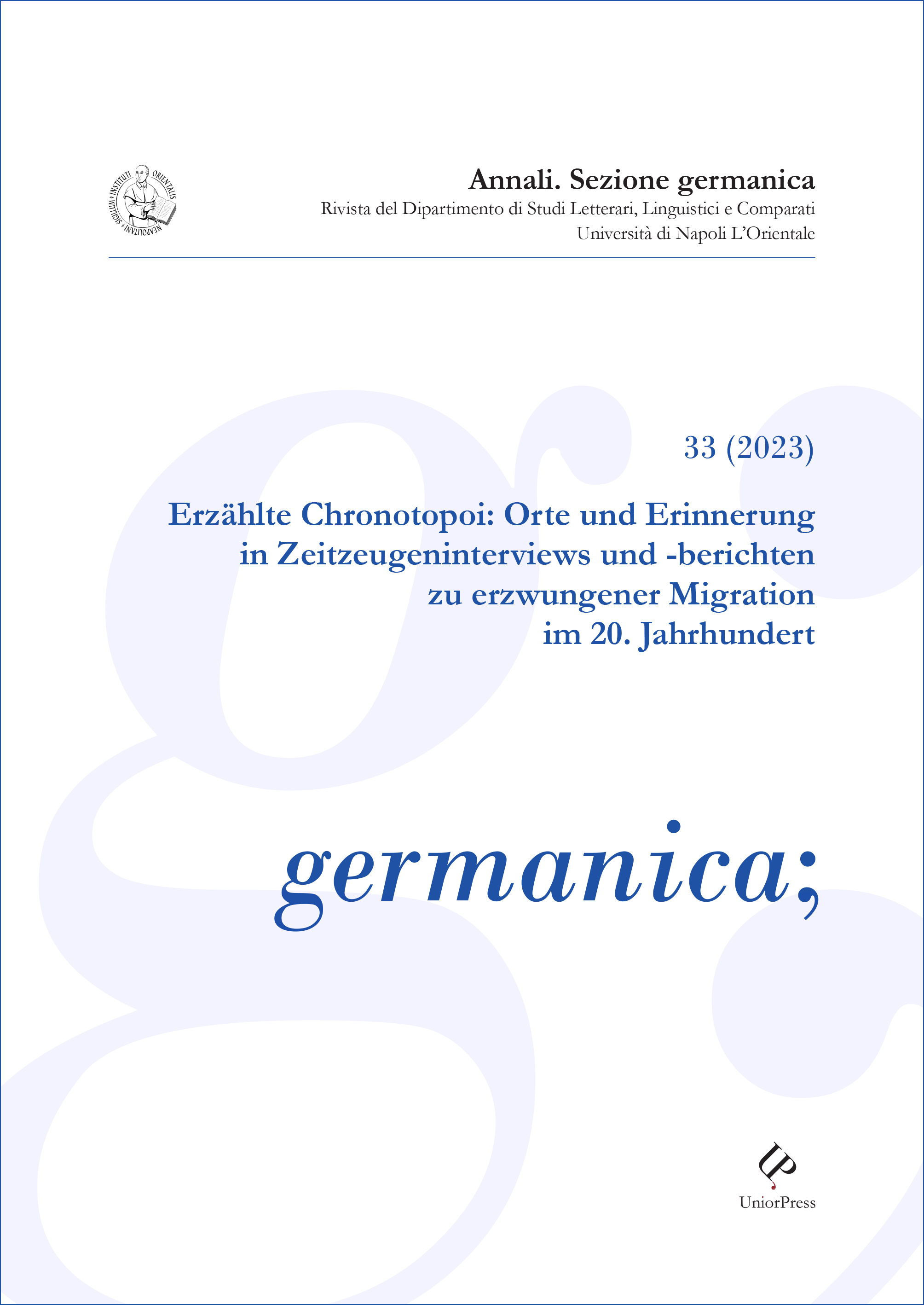Coreference and thematic cores in the interviews of the corpus IS
DOI:
https://doi.org/10.6093/germanica.v0i33.10752Keywords:
Israelkorpus, coreference, entities, thematic cores, cohesionAbstract
The aim of the following contribution is to identify coreferences and thematic cores in the corpus Emigrantendeutsch in Israel (IS), using corpus analysis and manual annotation. We will focus on two interviews, that with Paul Avraham and Betti Alsberg (IS_00002) and that with Clara Bartnitzki (IS_00008) (see 2.1). The starting point for our considerations is the hypothesis that in interviews some referents, such as interviewees, appear independently of their respective thematic core, while other referents (and thus members of coreference chains), appear grouped in segments dedicated to specific thematic cores. Firstly, we believe that being able to automatically create coreference chains in narrative interviews is important in order to more easily identify and extract text segments in which certain entities or persons are mentioned. As already shown in Flinz/Ruppenhofer 2021, Named Entity Recognition (NER) systems can identify names of people or organizations. However, they usually do not associate such mentions with coreferential mentions that have the form of ordinary nouns or pronouns (see Li et al. 2020; Nadeau/Sekine 2007). Only additional annotation can generate coreferential chains. Secondly, coreference can be linked to the segmentation of interviews by thematic cores. Since it contributes to the cohesion of the text (see Halliday/Hasan 1976), we can make the hypothesis that the way in which the elements of the coreferential chains are distributed can provide clues to thematic segmentation. To this end, we would also like to examine whether the coreference structures of the interviews may reveal new facets not otherwise easily discernible.
Downloads
Published
How to Cite
Issue
Section
License
The authors who publish in this Journal accept the following conditions:
- The authors retain the rights to their work and give the magazine the right to first publish the work, simultaneously licensed under a Creative Commons License - Attribution which allows others to share the work indicating the intellectual authorship and the first publication in this magazine.
- Authors may adhere to other non-exclusive license agreements for the distribution of the version of the published work (eg deposit it in an institutional archive or publish it in a monograph), provided that the first publication took place in this magazine.
- Authors can disseminate their work online (e.g. in institutional repositories or on their website) before and during the submission process, as it can lead to productive exchanges and increase citations of the published work (See The Effect of Open Access).


